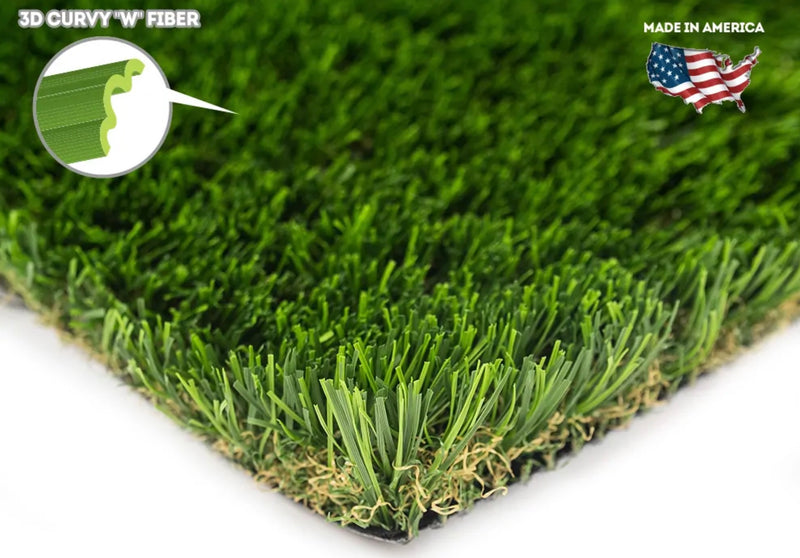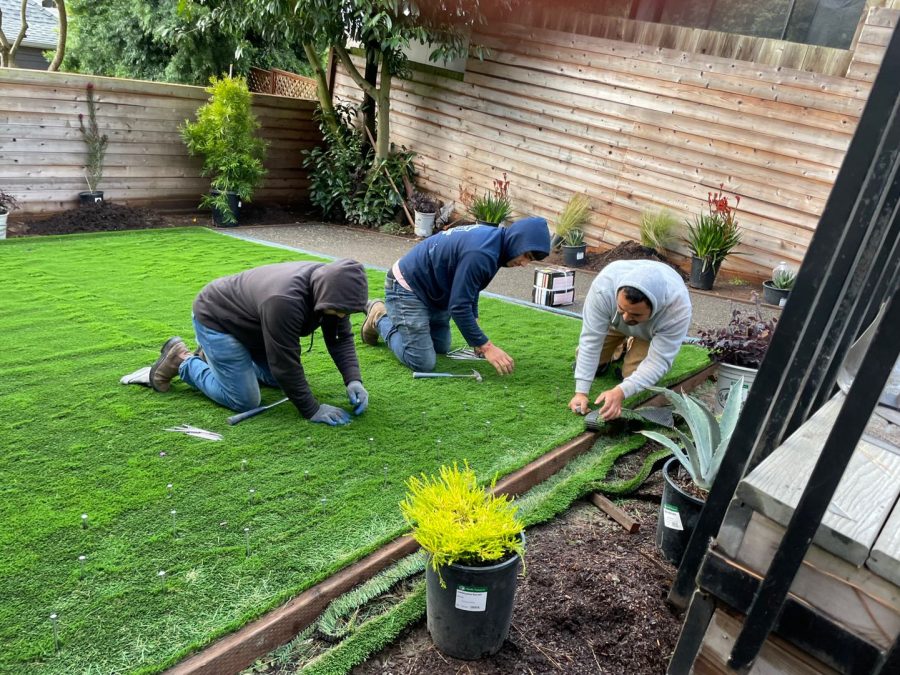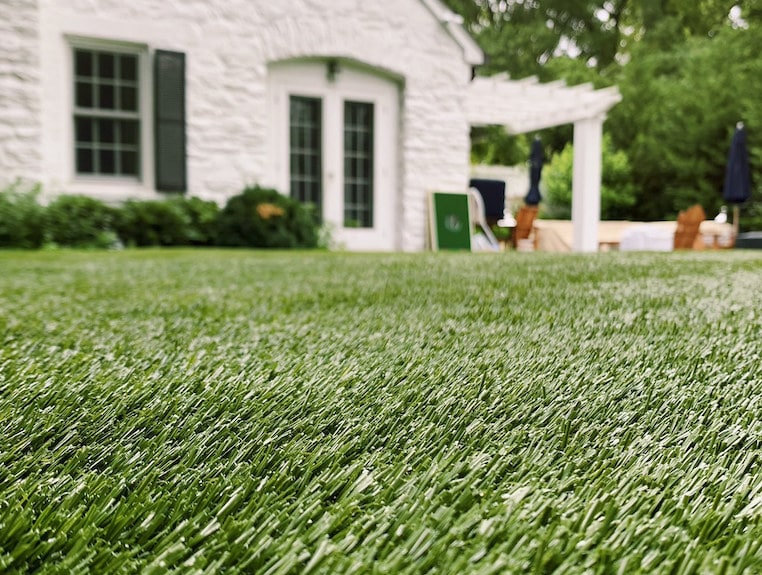See Why Homeowners Prefer Synthetic Grass for Lasting Landscaping Practices
As homeowners increasingly prioritize sustainability in landscape design, synthetic lawn has arised as a compelling option to typical turf. What continues to be to be checked out is the complete extent of benefits that man-made lawn can provide to home owners and the environment alike.
Water Preservation Benefits
One of one of the most substantial advantages of man-made lawn is its role in water conservation. Standard grass lawns need significant quantities of water to maintain their rich appearance, frequently causing overuse of neighborhood water sources, especially in arid regions. In comparison, fabricated lawn eliminates this demand completely, as it does not call for watering. This not only conserves water yet also decreases the pressure on metropolitan water supply, specifically throughout drought conditions.
Additionally, the installment of man-made lawn can add to an extra lasting landscape. Home owners can considerably lower their water bills, allowing for reallocation of resources to other environmental initiatives or household uses. Furthermore, man-made grass is created to stand up to numerous weather conditions without the requirement for extra watering, making it an ideal selection for areas encountering water shortage.
The ecological advantages expand past immediate water financial savings. By reducing water consumption, fabricated grass helps to minimize the effects of environment modification, protecting vital ecosystems that are intimidated by too much water extraction. As lasting landscaping practices get traction, synthetic grass becomes an accountable selection for house owners looking for to produce green outside spaces.
Minimized Maintenance Efforts
Synthetic grass significantly lowers maintenance initiatives contrasted to standard turf lawns. With fabricated lawn, homeowners can remove the taxing tasks connected with natural landscape design, such as mowing, fertilizing, and weeding. This not just saves beneficial time however additionally minimizes physical labor, making grass treatment easily accessible for people of any ages.
One of one of the most remarkable advantages is the absence of regular mowing. Conventional lawns require frequent trimming to preserve a visually pleasing elevation, whereas fabricated lawn continues to be continually lush without the need for cutting. Additionally, property owners no longer need to apply fertilizers or chemicals, which are usually called for to maintain all-natural lawn healthy and balanced. This shift not only lightens the workload but also promotes a neater, more uniform look year-round.
In addition, synthetic grass is durable and resilient, calling for very little upkeep beyond occasional brushing and washing to eliminate particles. This convenience of maintenance allows homeowners to appreciate their outdoor rooms without the constant concern of upkeep, supplying more time for recreation and family tasks. Inevitably, the minimized upkeep efforts linked with synthetic grass make it an appealing alternative for those seeking a low-maintenance, visually appealing landscape.

Ecological Impact Decrease
There is a growing recognition of the environmental advantages related to artificial lawn, particularly in regards to water conservation and minimized chemical usage. Standard lawns need substantial amounts of water, specifically in drought-prone regions, causing increased stress on local water resources. In comparison, synthetic grass removes the need for irrigation, significantly minimizing water intake and promoting sustainability.
Furthermore, standard lawn maintenance commonly entails the application of fertilizers, pesticides, and herbicides, which can add to soil and water contamination. Fabricated additional reading turf reduces this ecological threat by requiring minimal upkeep and essentially removing the demand for harmful chemicals. This not only enhances soil health however likewise shields regional ecological communities from toxic runoff.
Moreover, the production of all-natural yard yards commonly entails making use of fossil gas for trimming and landscape design devices, additional adding to greenhouse gas emissions. By choosing artificial turf, homeowners can significantly decrease their carbon impact connected with lawn treatment tasks.
Aesthetic Appeal and Versatility
In addition to its ecological advantages, man-made lawn provides substantial aesthetic charm and convenience for landscaping. Property owners can attain a lush, eco-friendly look year-round, removing the seasonal fluctuations typically related to natural turf. This regular aesthetic not only improves the visual allure of a residential or commercial property however additionally adds to a well-kept and sleek appearance.
Moreover, synthetic grass is readily available in a selection of styles, textures, and browse around this web-site shades, enabling personalization to suit specific choices and layout styles - Artificial turf companies phoenix. Whether used in residential gardens, business rooms, or leisure areas, it can perfectly integrate right into varied landscaping designs, from modern minimal to rich tropical settings
The convenience of synthetic grass prolongs beyond plain look; it can be installed in various areas, including rooftops, patio areas, and also indoor rooms, developing chances for distinct landscape design remedies. Furthermore, it is appropriate for a variety of activities, from youngsters's backyard to pet-friendly atmospheres, providing functionality without compromising style.
Inevitably, the visual charm and versatility of synthetic grass make it an appealing option for home owners looking for lasting landscaping remedies that do not compromise elegance for environmental duty.

Long-Term Expense Savings
One of the most engaging advantages of man-made lawn is its potential for long-lasting price savings. Unlike natural yard, which requires routine upkeep-- consisting of mowing, watering, fertilizing, and insect control-- man-made lawn considerably minimizes these recurring expenditures.
Additionally, synthetic grass has a life-span of 15 to 25 years, depending on its quality and usage. This toughness decreases substitute costs, making it a more economical choice in the future. The first financial investment in man-made grass can typically be recovered through the savings accrued over time.
While the ahead of time price might seem greater contrasted to turf setup, the cumulative financial savings from lowered upkeep and water usage often surpass these preliminary expenditures. Ultimately, the fostering of man-made grass not only advertises a lasting landscaping remedy yet likewise provides homeowners a monetarily savvy alternative that straightens with long-term budgeting objectives.
Final Thought
Man-made lawn arises as an engaging option for sustainable landscaping, providing considerable benefits in water preservation, lowered upkeep initiatives, and diminished environmental impact. As communities progressively prioritize ecologically friendly methods, the adoption of synthetic grass represents a modern step toward achieving resilient and lasting landscapes.
In addition, fabricated lawn is made to withstand various climatic problems without the demand for supplementary watering, making it an ideal selection for areas encountering water deficiency. (Arizona artificial turf)

Man-made lawn emerges as a compelling alternative for sustainable landscape design, using considerable benefits in water conservation, reduced upkeep efforts, and lessened environmental influence.